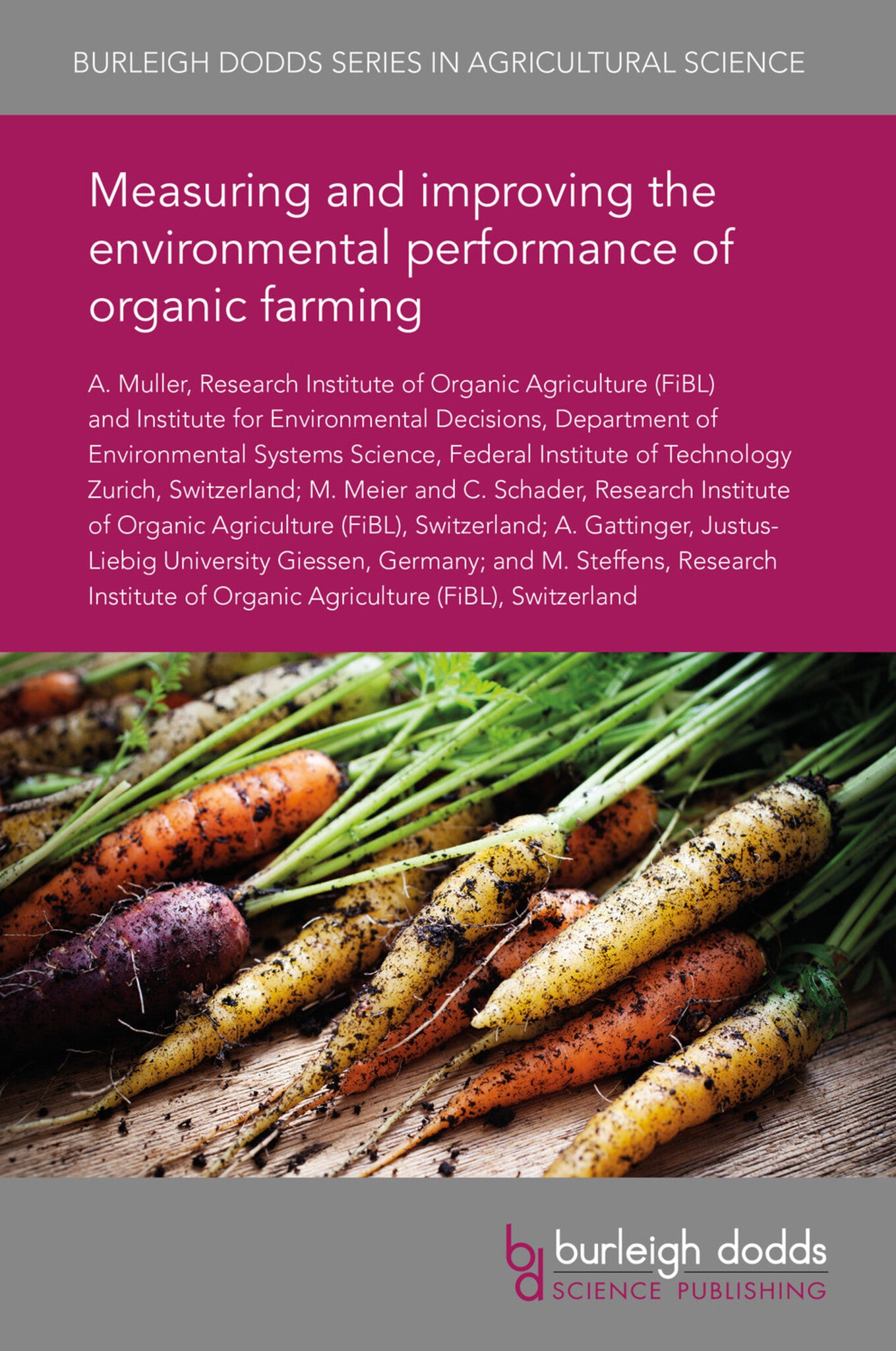We're sorry. An error has occurred
Please cancel or retry.
Measuring and improving the environmental performance of organic farming
Regular price
£25.00
Sale price
£25.00
Regular price
£25.00
Unit price
/
per
Sale
Sold out
Re-stocking soon
There is a large and growing body of literature comparing the environmental performance of organic and conventional farming in specific settings, either on farm or product level. However, how one a...
Read More

Some error occured while loading the Quick View. Please close the Quick View and try reloading the page.
Couldn't load pickup availability
- Format:
-
29 November 2018

There is a large and growing body of literature comparing the environmental performance of organic and conventional farming in specific settings, either on farm or product level. However, how one assesses ‘environmental performance’ is a complex and multifaceted question, and one-dimensional indicators tend to neglect key aspects of production systems. This chapter evaluates a number of multidimensional methods of assessment, including Life Cycle Assessment, Productivity Analysis, multi-criteria assessment approaches and food systems modelling. It is concluded that the assessment of environmental performance must go beyond the level of production, and address consistency and sufficiency aspects that emerge at the consumption stage. The organic sector has a vital role to play in defining how performance of agro-systems and food systems should be assessed.

Price: £25.00
Publisher: Burleigh Dodds Science Publishing
Imprint: Burleigh Dodds Science Publishing
Series: Burleigh Dodds Series in Agricultural Science
Publication Date:
29 November 2018
ISBN: 9781838796587
Format: eBook
BISACs:
TECHNOLOGY & ENGINEERING / Agriculture / Sustainable Agriculture, Organic farming, TECHNOLOGY & ENGINEERING / Agriculture / Agronomy / Crop Science, TECHNOLOGY & ENGINEERING / Agriculture / Organic, Sustainable agriculture, Agronomy and crop production

1 Introduction 2 Notions of environmental performance 3 Efficiency, consistency and sufficiency 4 Methods for assessing environmental performance 5 Improving performance 6 Conclusions and future trends 7 Acknowledgements 8 Where to look for further information 9 References



